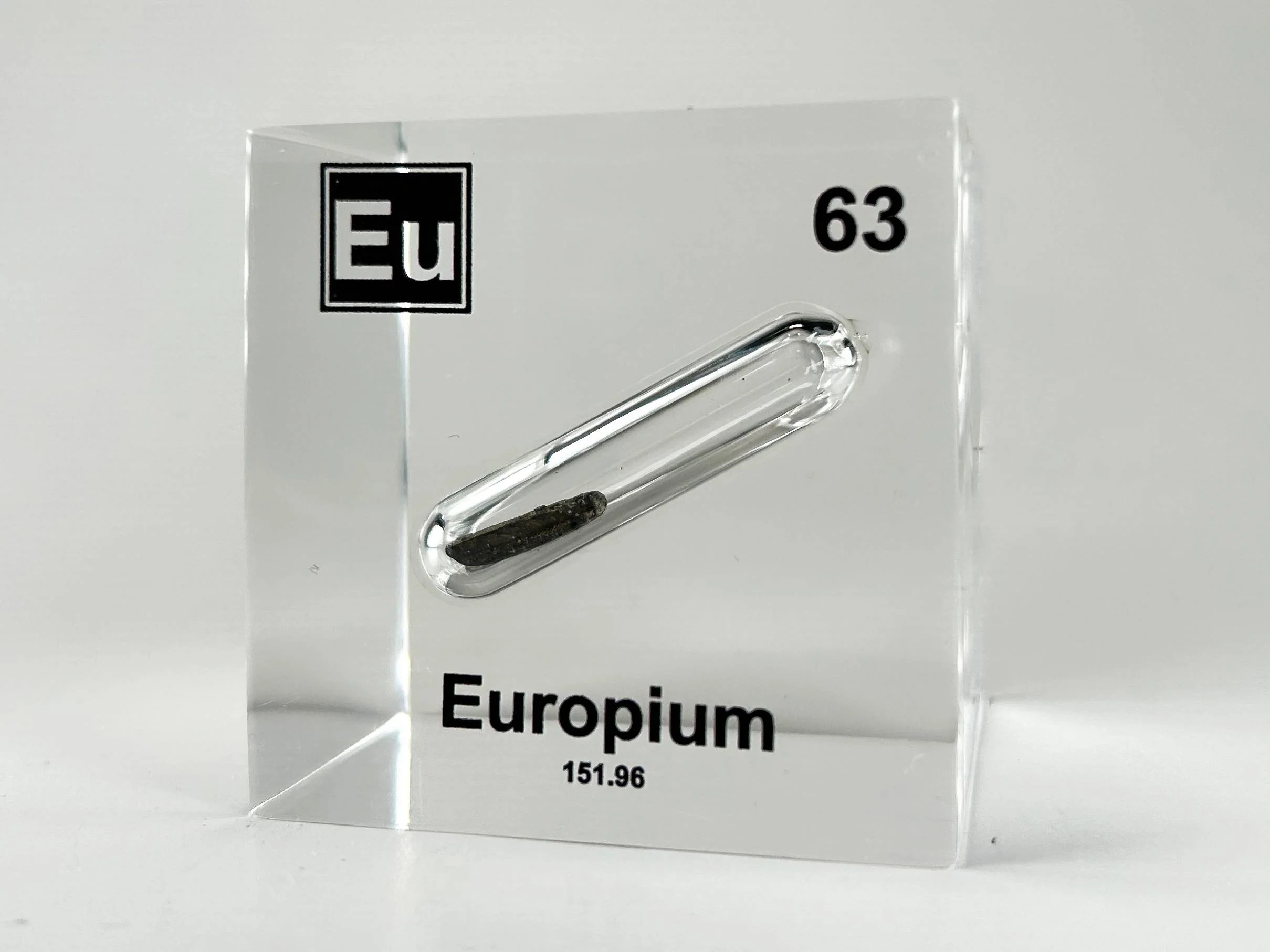
Europium is a fascinating element that holds a significant place in the periodic table. As one of the rare earth elements, europium has unique properties and uses that make it a subject of interest for scientists and enthusiasts alike. In this article, we'll explore 20 fun and intriguing facts about europium, shedding light on its discovery, characteristics, applications, and more. From its role in creating vibrant colors in television screens to its presence in security features on banknotes, europium's impact extends far beyond its place in the periodic table. Join us as we delve into the world of europium and uncover the remarkable aspects that make it a standout element. So, let's embark on an exciting journey to unravel the allure of europium!
Key Takeaways:
- Europium, named after Europe, is a rare earth element with unique properties. It’s used in Euro banknotes, cancer treatment research, and even detected in the atmospheres of exoplanets!
- Europium’s luminescent and superconducting properties make it essential in technology, from TV screens to quantum computing. It has a rich history of scientific discovery and continues to inspire innovation.
Europium is named after the continent of Europe.
It was first discovered in 1901 by Eugène-Anatole Demarçay, a French chemist. The element was named after the continent of Europe to honor its discovery on the continent.
Europium is a rare earth element.
It is a member of the lanthanide series of chemical elements and is found in rare earth minerals. Europium is a silver-colored metal that is relatively stable in air but can ignite spontaneously.
Europium is used in Euro banknotes.
It is incorporated into the security features of Euro banknotes to protect against counterfeiting. The element’s unique luminescent properties make it an essential component in creating a secure currency.
Europium is essential for the production of red and blue phosphors.
These phosphors are used in the production of color television tubes and fluorescent lamps. Europium compounds are crucial for creating the red color in television screens and the blue color in energy-efficient lamps.
Europium has the symbol Eu and atomic number 63.
It is a soft, silvery metal that is ductile and moderately reactive. Europium is the most reactive rare earth element and quickly oxidizes in air.
Europium has two stable isotopes.
Europium-151 and europium-153 are the two stable isotopes of europium, with europium-153 being the most abundant. These isotopes are used in nuclear reactors and for various medical purposes.
Europium has a unique fluorescent signature.
When europium ions are excited by ultraviolet light, they emit a bright red fluorescence. This property makes europium a valuable element in the production of fluorescent lamps and television screens.
Europium is used in the nuclear industry.
It is utilized as a neutron absorber in nuclear reactors and is also used in the production of nuclear fuel. Europium’s ability to absorb neutrons makes it valuable in controlling nuclear reactions.
Europium is a superconductor at extremely low temperatures.
When cooled to very low temperatures, europium exhibits superconducting properties. This makes it valuable for various technological applications, especially in the field of quantum computing.
Europium has potential applications in cancer treatment.
Some studies suggest that europium isotopes could be used in cancer therapy to target and destroy cancer cells. Research into the medical applications of europium is ongoing and shows promise in the field of oncology.
Europium is found in the Earth’s crust.
It is a relatively abundant element in the Earth’s crust, although it is not found in its pure form due to its reactivity. Europium is primarily obtained from bastnäsite and monazite ores.
Europium has a strong magnetic moment.
It is known for its large magnetic moment, which makes it valuable in the production of strong permanent magnets. These magnets are used in various electronic devices and magnetic resonance imaging (MRI) machines.
Europium has a significant role in the field of luminescence.
Its unique luminescent properties have made it a crucial element in the development of phosphors for energy-efficient lighting and display technologies. Europium-based phosphors are widely used in the production of LEDs and plasma screens.
Europium has been used to date ancient rocks.
By measuring the relative abundance of europium isotopes, scientists can determine the age of ancient rocks and minerals. This application has provided valuable insights into the geological history of the Earth.
Europium has potential applications in the field of quantum cryptography.
Its quantum properties make it a candidate for use in quantum cryptography, a secure method of communication based on the principles of quantum mechanics. Europium’s unique characteristics could contribute to the development of highly secure communication networks.
Europium has been detected in the atmospheres of exoplanets.
Astronomers have observed the presence of europium in the atmospheres of exoplanets, providing valuable information about the composition of distant worlds. This discovery has expanded our understanding of planetary systems beyond our solar system.
Europium has potential applications in the field of quantum computing.
Its superconducting properties at low temperatures make it a candidate for use in quantum computing technologies. Europium’s ability to carry quantum information could contribute to the development of advanced quantum computers.
Europium has been used in the production of security markers for valuable items.
Its unique luminescent properties have made it an essential component in the production of security markers for valuable items such as artwork and luxury goods. Europium-based markers provide an added layer of protection against counterfeiting and theft.
Europium has been studied for its potential role in improving the efficiency of solar cells.
Researchers are exploring the use of europium-doped materials to enhance the efficiency of solar cells. By harnessing europium’s unique properties, scientists aim to develop more effective solar energy technologies.
Europium has a rich history of scientific discovery and technological innovation.
From its initial discovery to its diverse applications in modern technology, europium has played a significant role in advancing scientific knowledge and driving innovation in various industries. The unique properties of europium continue to inspire research and development in the pursuit of new technologies and applications.
Conclusion
Europium is a fascinating element that has a range of interesting properties and uses. From its unique fluorescence in the presence of UV light to its crucial role in the production of vibrant red and blue phosphors for electronic displays, europium continues to captivate scientists and industry professionals alike. Its presence in the Euro banknotes adds an intriguing dimension to its significance. As we continue to explore and harness the potential of europium, it remains an essential element in various technological and scientific applications, contributing to the advancement of numerous fields. The diverse and captivating nature of europium ensures that it will remain a subject of interest and research for years to come.
FAQs
What are the common uses of europium?
Europium is commonly used in the production of red and blue phosphors for electronic displays, as well as in the manufacturing of fluorescent lamps and TV screens.
Is europium a rare element?
Yes, europium is considered a rare earth element and is relatively scarce in the Earth’s crust compared to more abundant elements.
What gives europium its unique fluorescence?
Europium exhibits fluorescence due to its ability to absorb and emit specific wavelengths of light, particularly in the presence of UV light.
How is europium utilized in the security features of Euro banknotes?
Europium is incorporated into the security threads of Euro banknotes, contributing to their anti-counterfeiting measures through its distinctive luminescent properties.
What are the potential future applications of europium?
Europium holds promise for various technological advancements, including in the fields of medical imaging, nuclear energy, and quantum computing, among others.
Was this page helpful?
Our commitment to delivering trustworthy and engaging content is at the heart of what we do. Each fact on our site is contributed by real users like you, bringing a wealth of diverse insights and information. To ensure the highest standards of accuracy and reliability, our dedicated editors meticulously review each submission. This process guarantees that the facts we share are not only fascinating but also credible. Trust in our commitment to quality and authenticity as you explore and learn with us.


